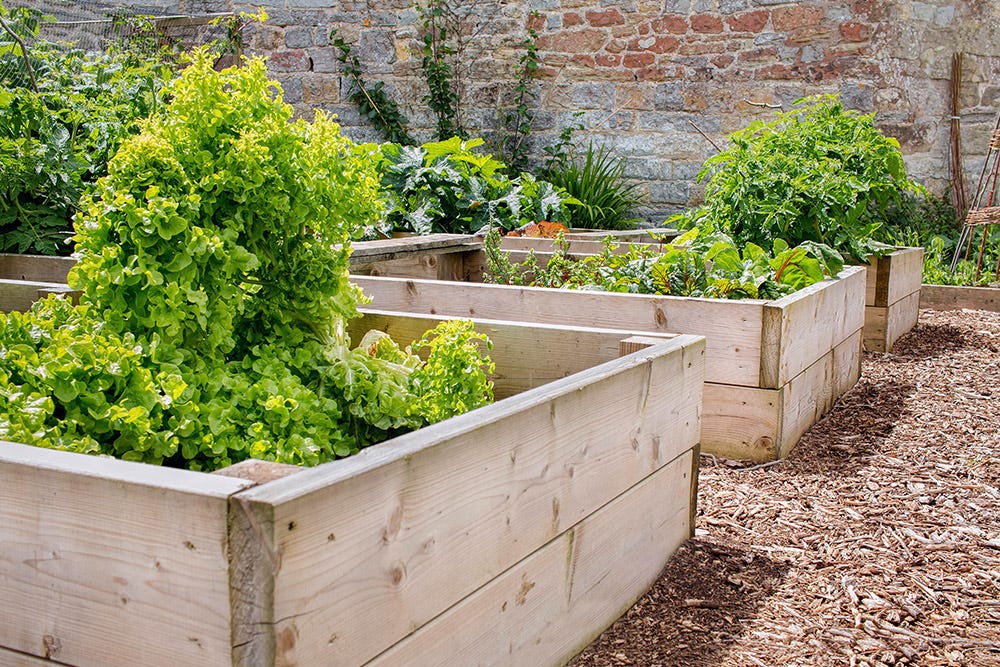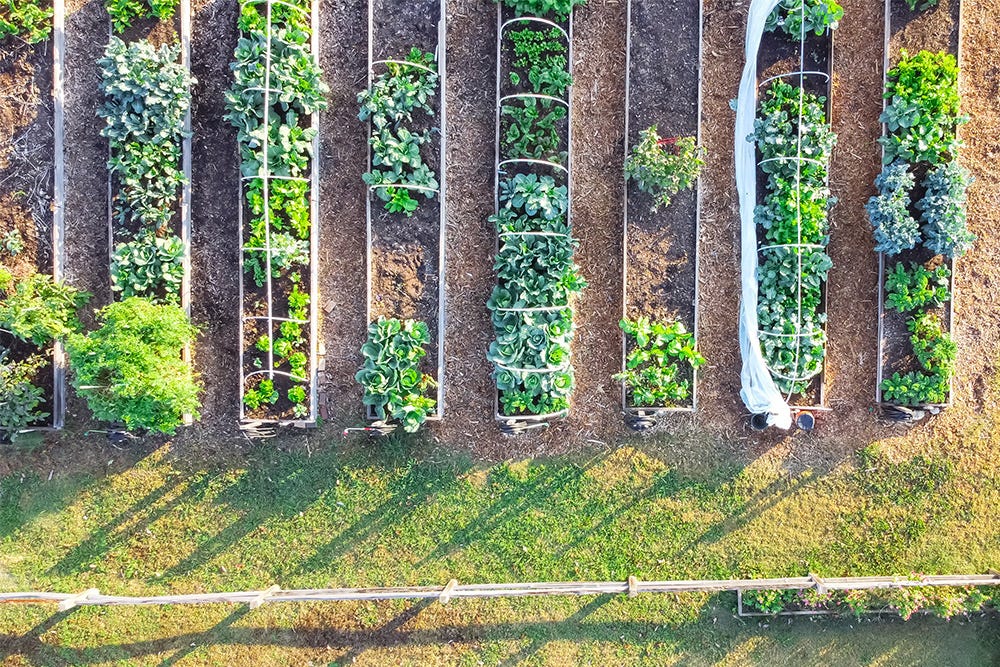- Maintenance tips & tricks
- 4-season garden care advice
- News from the gardening world
- STIGA innovations & new product launches
Tips for a low-maintenance vegetable garden
Growing vegetables is a rewarding pastime – but it can seem overwhelming at first. From low-maintenance crops to raised beds, check out our tips for a hassle-free route to delicious healthy produce.

Great crops are best managed by doing the key jobs little and often. And it's easier to do this if you start small: begin with a raised bed or pots of veg on the balcony, then gradually expand as you gain confidence.
Kill the weeds
Before planting, pull up any weeds that you can see on your plot. Pay particular attention to perennials like bindweed and Japanese knotweed, as these are especially tricky to remove and can smother your crops if left unchecked.
A weed-suppressing, water-permeable membrane laid on the topsoil can suppress weeds, while allowing nutrients and water to pass through. Simply cut a hole where you want your plant to sit.
Sowing and growing
Try using raised beds to keep your crops out of the way of wandering feet and small animals – they're also friendly on your back. Adding fresh soil will keep weeds to a minimum.
The ‘no-dig method’ is another alternative method of planting that saves you time and doesn’t disturb the soil. Rather than digging down into it, you build upwards by adding an inch or two of compost – often on layers of old cardboard.
You can also sow seeds for some crop outdoors, straight into the ground. This is ideal for root vegetables, peas, beans, and leafy crops like spinach and lettuce.
What to plant
If you’re new to growing veg, it’s best to grow crops that are low-maintenance and quick to harvest like radishes or courgettes. Space-saving, high-yield crops include chillies and French green beans or runner beans.
You can also save time – and frustration – by picking pest-resistant vegetable varieties such as blight-resistant tomatoes or ‘flyaway’ carrots that discourage root fly.
Companion plants can help to attract pollinators and keep pests at bay while you’re away from your veg patch. Try planting squash with marigold or broccoli with oregano.
And if you'd rather not sow seeds, you can buy young plants instead. Visit your local garden centre in spring to choose from a wide range – everything from lettuce to tomatoes.
Water, water everywhere
If you have space, set up a water butt close to your plot to recycle rainfall. Linking it to a shed roof drainage downpipe will this save you endless trips to a tap – and it’s better for the environment. A thorough watering every few days allows the soil to dry between soakings, reducing the risk of overwatering.

There’s nothing quite like eating fresh vegetables from your own garden – and it can be a much more sustainable way of getting more nutrients into your diet. If you’re thinking of starting your own vegetable patch, follow our top five tips to make it a success.



















